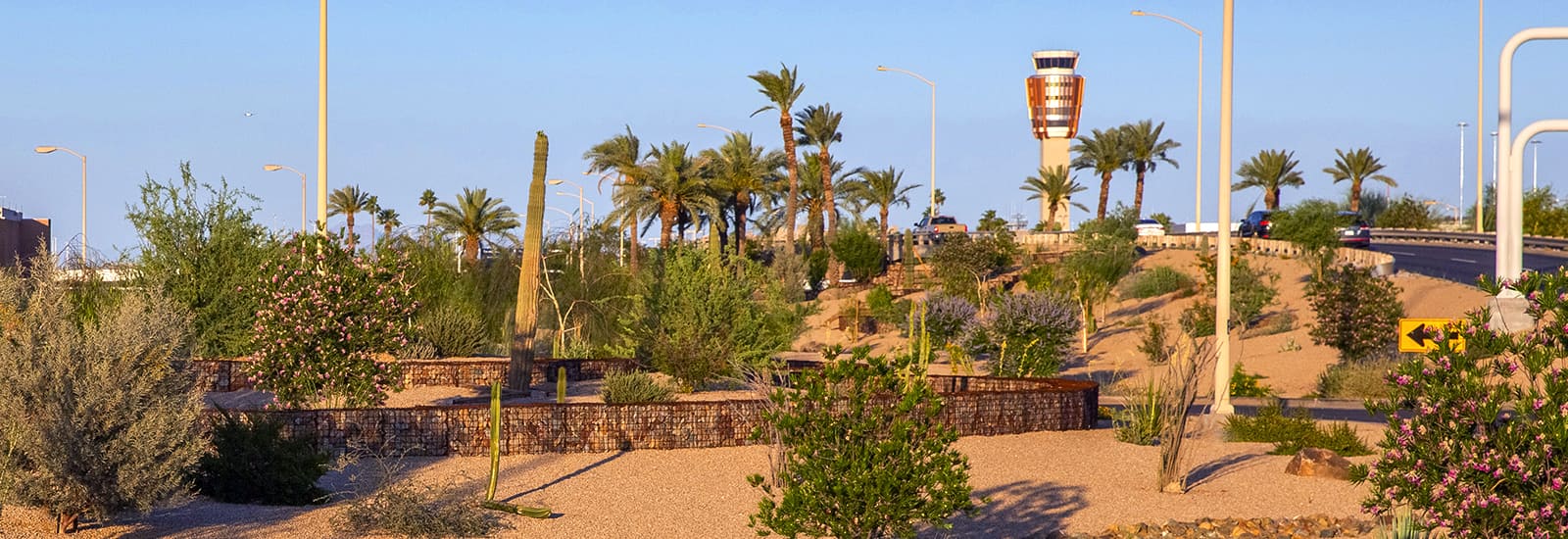Solid Waste Management
Sky Harbor Solid Waste Management Plan Initiatives
Executive Summary
Phoenix Sky Harbor International Airport (PHX or Airport) is committed to sustainability, recently completing an airport-wide Sustainability Management Plan. Within this plan, the Airport set goals relative to various categories, such as air quality, water, greenhouse gas emissions, and waste management and recycling. A subsequent project, described in this report, was undertaken to evaluate the existing waste management program and recommend additional strategies to increase landfill diversion in order to meet the Airport’s goal of 40 percent landfill diversion by the year 2020.
44.8%
Landfill Waste Diverted as of 2022
As of spring 2022, the existing program was diverting approximately 44.8 percent of waste from landfill, primarily through recycling. A waste audit and surveys of Airport tenants and employees were conducted to help create a baseline and identify areas for improvement. Using this baseline, as well as input from the Airport and stakeholders, a number of recommendations were identified to reduce waste and increase recycling. The full list is included as an appendix to this report. The recommendations were screened for ease of implementation, cost, timing, and potential diversion to create an implementation plan with recommendations that, if implemented, it should help the Airport meet its Zero Waste by 2050 diversion goal.
Zero Waste
by 2050
Highlights of these near-term recommendations include:
- Composting programs in food vendor back-of-house areas
- Tenant recycling support
- Food donation program support for food vendors
- Enhanced program signage
- Education/training and communication programs
- Recycling-focused employee team
- Printing and copying strategies for Aviation Department areas
A full list of the near-term recommendations (to be implemented by 2020), timing, and estimated increase in the diversion are included in the following figure. In addition to the specific recommendations that are linked to estimated diversion rates, additional recommendations have been made that can help with overall program continuity and strength. These include the creation of a recycling working group and the establishment of a continuous communication program. The wide range of recommendations allows the Airport to implement those which are compatible with changing conditions and available resources and provides the opportunity to exceed the 40% diversion minimum. Phased implementation of these proposed strategies is expected to position the Airport to meet or exceed its waste diversion goal.

